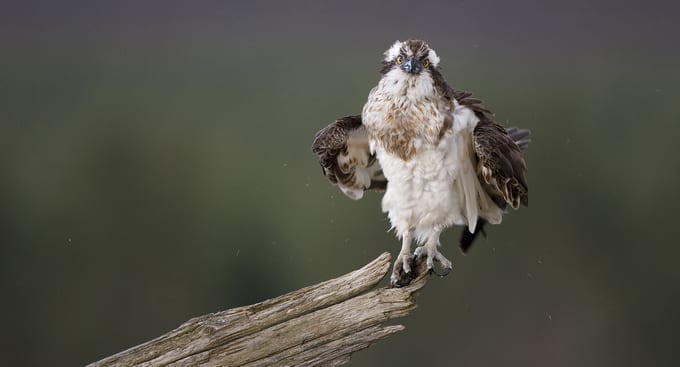Osprey
Gwalch y Pysgod. Pandion heliaetus
Ospreys spend the winter in Africa, returning in the spring to Europe, often to the same sites (sometimes for decades), to breed. Females lay a clutch of 2-3 eggs, which are incubated by both the female and her mate. Chicks fledge at around 53 days, and mature slowly, only breeding when they reach around 4-5 years. 99% of their diet is fish, occasionally supplemented by rodents, rabbits, hares, amphibians, other birds, and small reptiles. Their fishing technique is distinctive, as they soar down to the water, wings swept back, stretching out their talons at the final moment to pluck a fish from the shallows, sometimes becoming completely submerged for a few seconds. Their closable nostrils and dense, oily coats allow them to be submerged in water up to a depth of 1 metre. Their relationship with fish inspired their Welsh name gwalch y pysgod (fish-hawk). For hunting convenience, ospreys rarely nest more than 5km away from a body of water.
Records show that Wales shares a long history with the osprey. The Swansea and West Glamorgan coats of arms both depict this majestic bird.
Status at Cambrian Wildwood: Absent, although it is possible they could be seen flying over the site, travelling from their nearby nesting site in the Dyfi valley. See the Dyfi Osprey Project.

